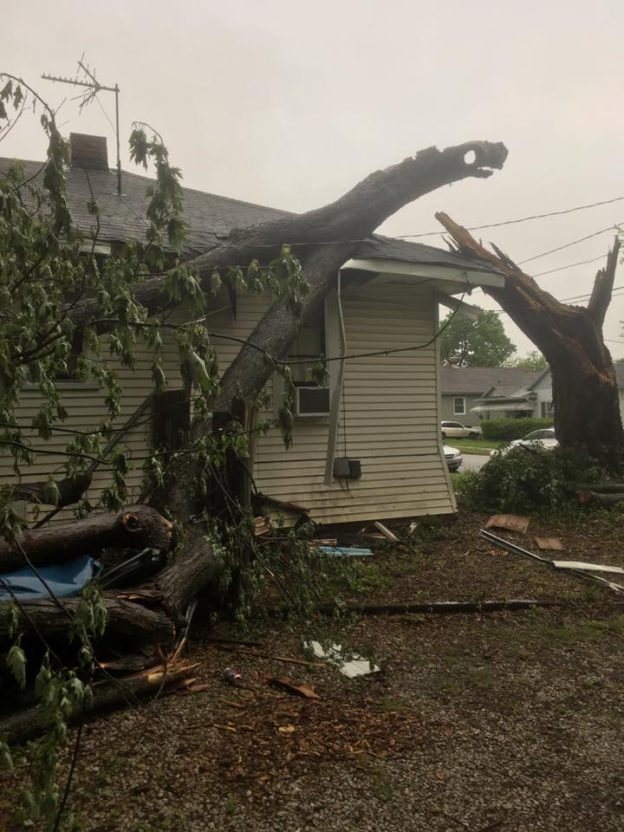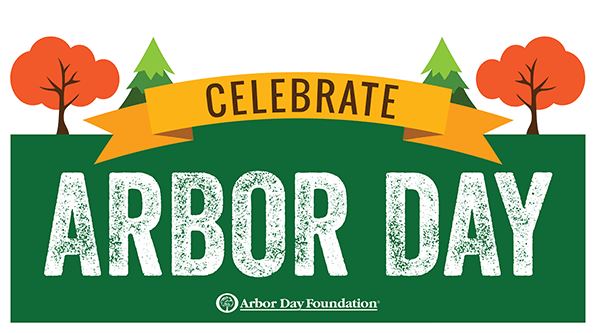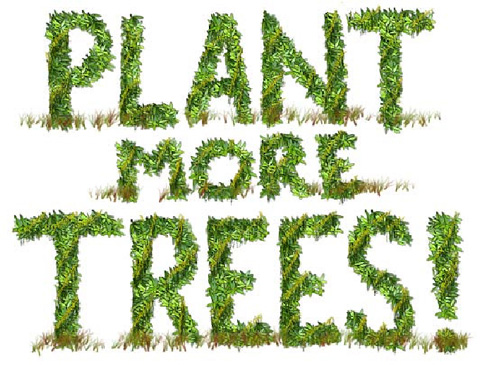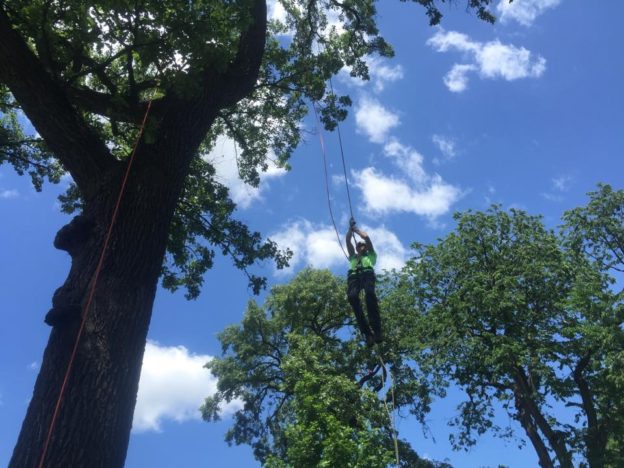Storms may cause limbs or entire trees to fall, often landing on other trees, structures, or cars. The weight of storm-damaged trees is great, and they can be dangerous to remove or trim. An arborist can assist in performing the job in a safe manner, while reducing further risk of damage to property.
Selecting the Right Arborist for the Job
• Check for membership in professional organizations such as the International Society of Arboriculture (ISA), the Tree Care Industry Association (TCIA), or the American Society of Consulting Arborists (ASCA). Such membership demonstrates a willingness on the part of the arborist to stay up-to-date on the latest techniques and information.
www.isa-arbor.com
www.treesaregood.org
• Check for ISA arborist certification. ISA Certified Arborists are experienced professionals who have passed an extensive examination covering all aspects of tree care.
• Ask for proof of insurance and then phone the insurance company if you are not satisfied. A reputable arborist carries personal and property damage insurance as well as workers’ compensation insurance.
• Check for necessary permits and licenses. Some governmental agencies require contractors to apply for permits and/or to apply for a license before they are able to work.
• Ask for references to find out where the company has done work similar to what you are requesting. Don’t hesitate to check references or visit other work sites where the company or individual has done tree work.
• Get more than one estimate, unless you know and are comfortable with the arborist. You may have to pay for the estimates, and it will take more time, but it will be worth the investment.
• Don’t always accept the low bid. You should examine the credentials and the written specifications of the firms that submitted bids and determine the best combination of price, work to be done, skill, and professionalism to protect your substantial investment.
• Be wary of individuals who go door-to-door and offer bargains for performing tree work. Most reputable companies are too busy to solicit work in this manner.
• Keep in mind that good arborists will perform only industry accepted practices. For example, practices such as topping a tree, removing an excessive amount of live wood, using climbing spikes on trees that are not being removed, and removing or disfiguring living trees without just cause are improper practices and violate industry standards.
• Don’t be afraid to ask questions, such as:
— When will the work be started and completed?
— Who will be responsible for clean-up?
— Is this the total price?
— What are the terms of payment?
— If I would like more to be done, what is your hourly rate?
What Is a Certified Arborist?
An arborist by definition is an individual who is trained in the art and science of planting, caring for, and maintaining individual trees. ISA arborist certification is a nongovernmental, voluntary process by which individuals can document their base of knowledge. It operates without mandate of law and is an internal, self-regulating device administered by the International Society of Arboriculture. Certification provides a measurable assessment of an individual’s knowledge and competence required to provide proper tree care.
Certification is not a measure of standards of practice. Certification can attest to the tree knowledge of an individual but cannot guarantee or ensure quality performance.
Certified Arborists are individuals who have achieved a level of knowledge in the art and science of tree care through experience and by passing a comprehensive examination developed by some of the nation’s leading experts on tree care. Certified Arborists must also continue their education to maintain their certification. Therefore, they are more likely to be up-to-date on the latest techniques in arboriculture.
Be an Informed Consumer
One of the best methods to use in choosing an arborist is to educate yourself about some of the basic principles of tree care. ISA offers several brochures which discuss many of the basic principles of tree care. http://www.treesaregood.com
Our Safety Standards
We are Licensed & Insured for your protection and we can prove it! To obtain a free copy of our proof of insurance, just give us a call at 417-863-6214.
- Liability
- Auto
- Property
- Workers’ Compensation
The safety of our employees, our customers, and their property is our top priority! We prune according to the American National Standards Institute’s (ANSI) procedures. We also follow OSHA standards for safety.
Often tree pruning must be done by tree climbers, when there is no bucket truck access, or when the tree is too dense to move the bucket around in the interior of the canopy. When pruning a tree by climbing, using the appropriate safety equipment is a must. All About Trees trains all our tree trimmers to climb safely using approved equipment and techniques.
All About Trees trains all crew members in using the most up-to-date methods and equipment for rigging down trees in pieces. Tree rigging is a very specialized skill, and can be an opportunity for disastrous results if adequate knowledge and training has not been given. Often we must remove trees with no room to rig down sections of the tree, so we must use a crane to lift the tree, piece by piece, and set it into an open area to be processed and cleaned up.
“Why Hire an Arborist?” Trees Are Good. International Society of Arboriculture, 2011. Web. 4 May 2017. <http://www.treesaregood.com/treecare/resources/hire_arborist.pdf>.











